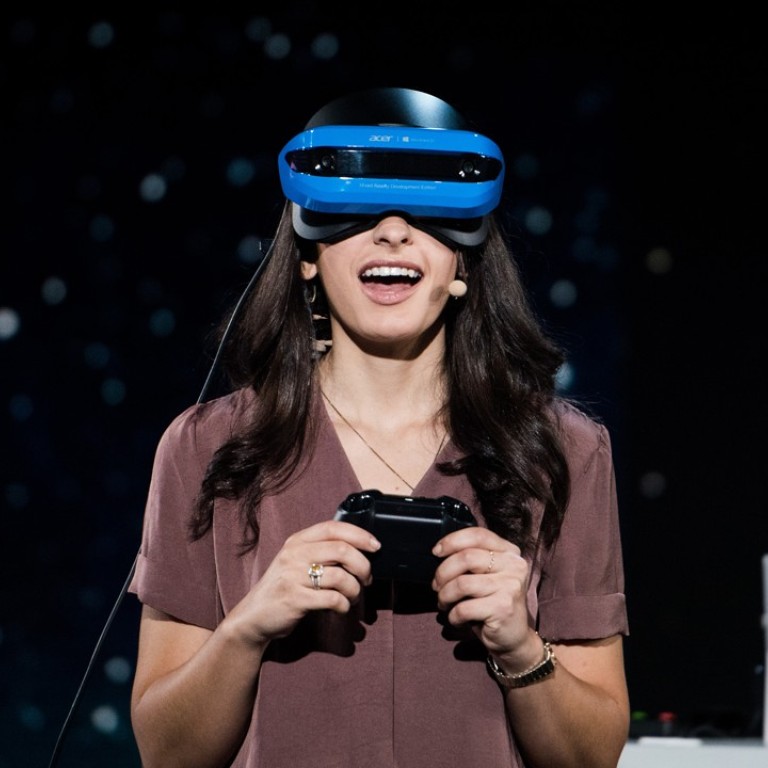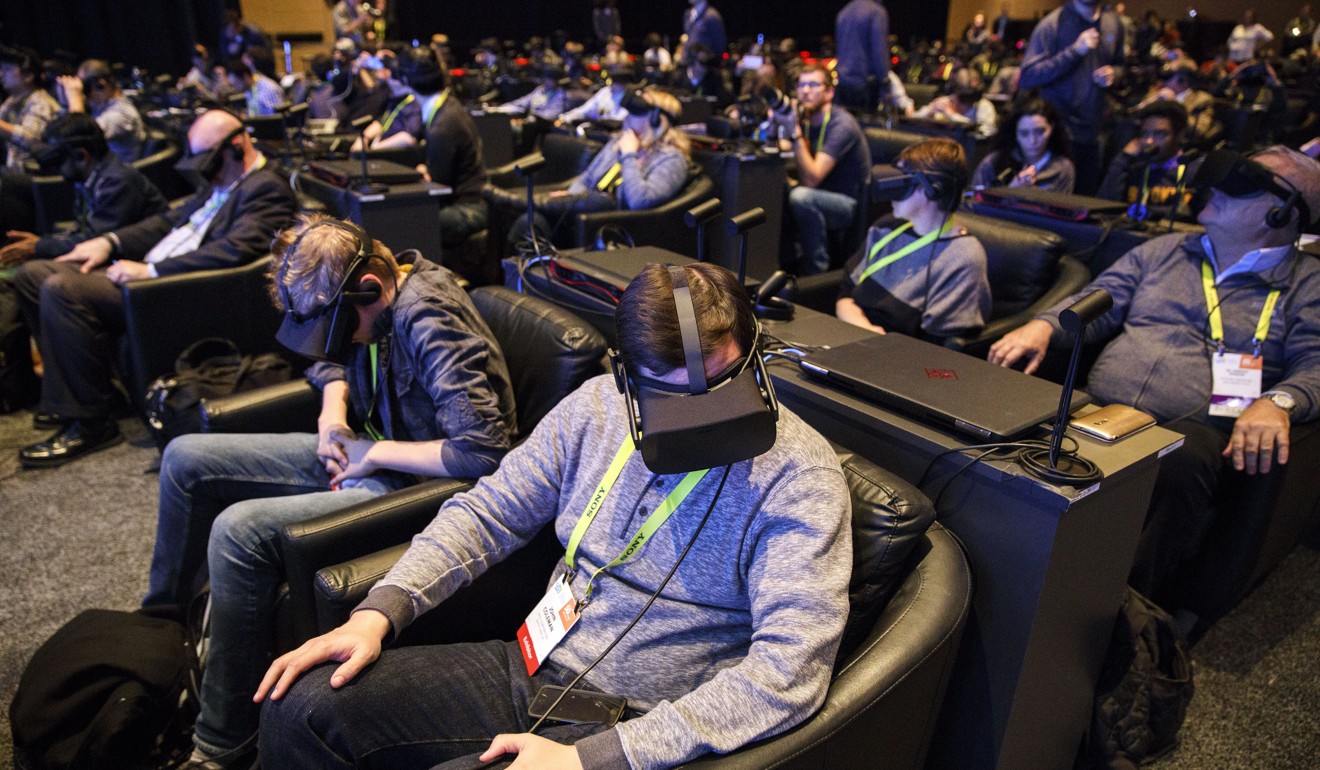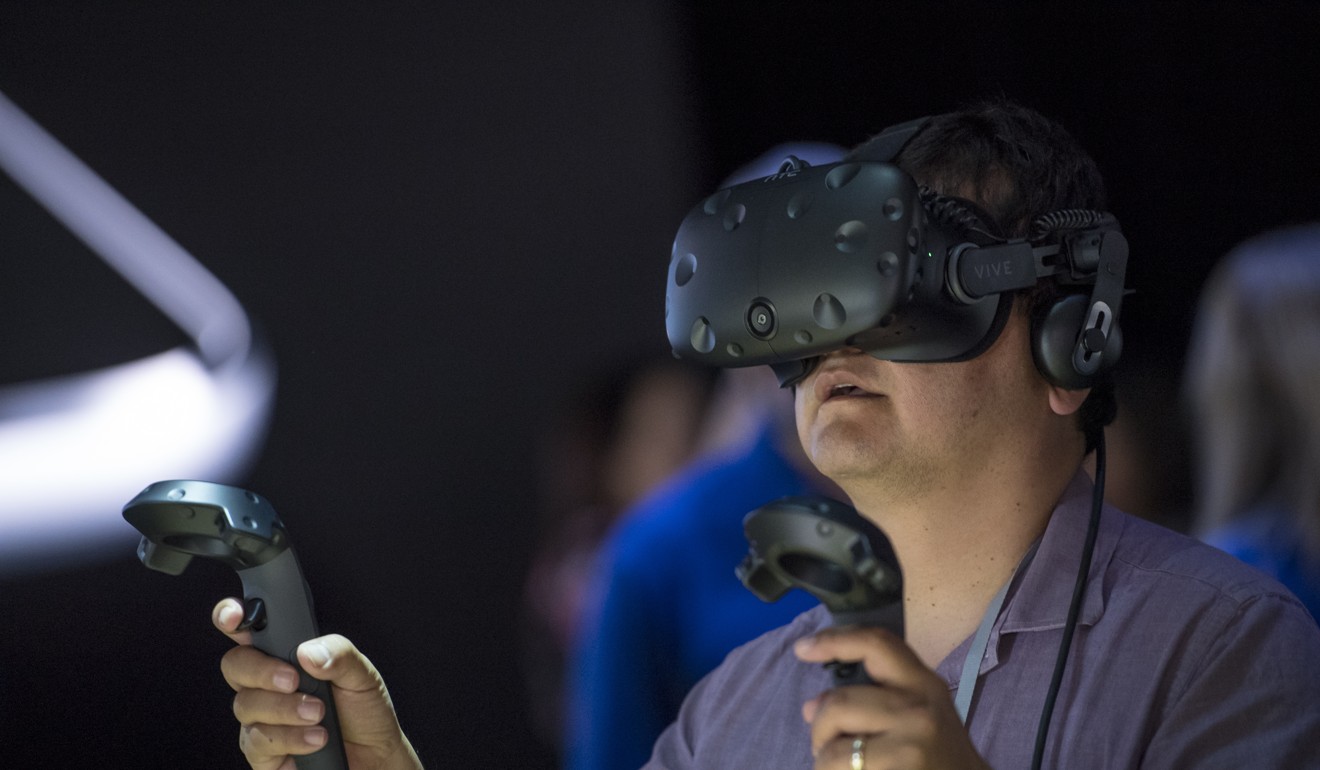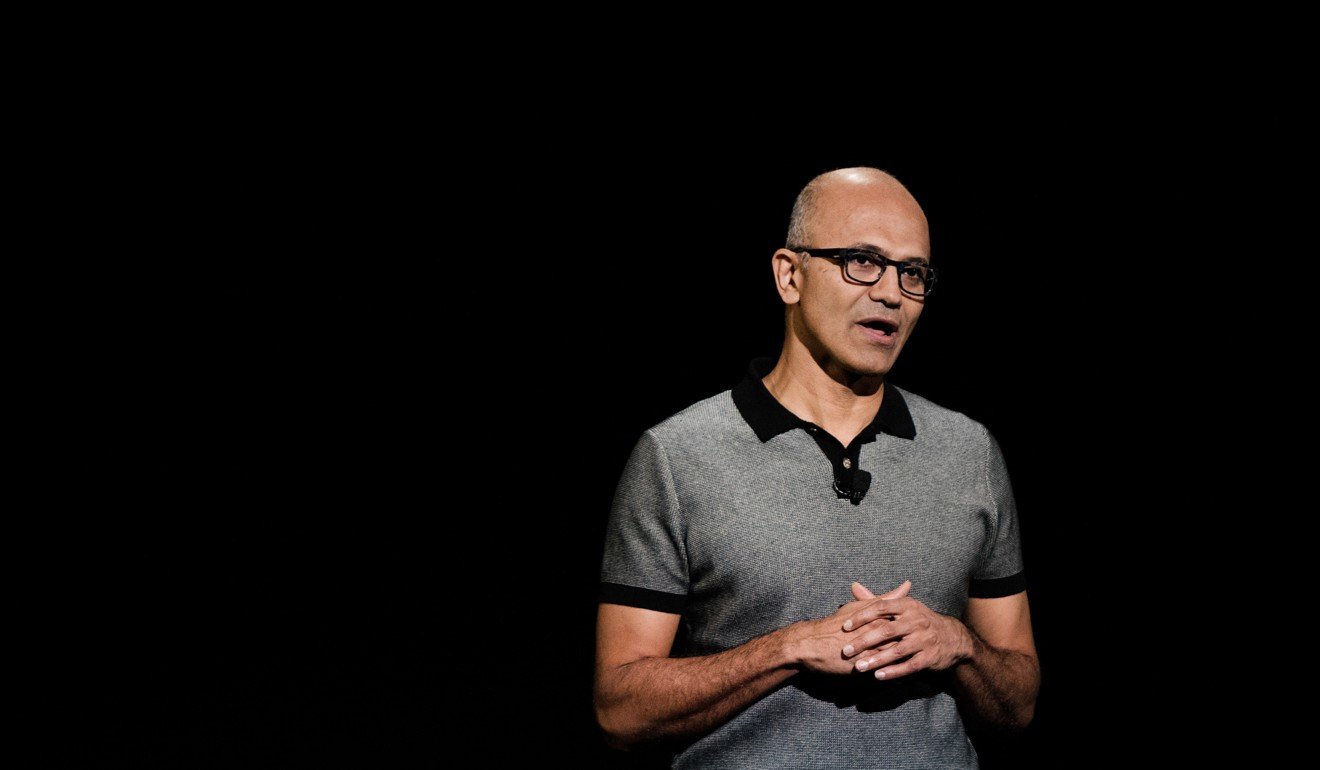
Microsoft wants to put virtual reality in your home for only US$399
Virtual reality tech has had a lukewarm response, due to clunky equipment and a lack of decent software, and the price of Microsoft’s VR bundle reflects this
Microsoft still hopes it can put the “reality” into virtual reality sales.
The tech giant has announcedthat its holiday season foray into what it calls mixed reality will be marked by US$399 headset/controller bundles from partners such as HP, Lenovo, Dell and Acer, along with a selection of games and other VR experiences.
That pricing is roughly in line with the competition. Facebook is now selling its Oculus Rift goggle and controller bundle for US$400, slashed from US$700, reflecting tepid consumer appetite for one of tech’s most-hyped hardware.
Microsoft is gamely trying change that story. Its VR content includes the travel-focused HoloTour, offering virtual tours of destinations such as Peru’s Machu Picchu, as well as games such as Minecraft, Luna, Space Pirate Trainer and Fantastic Contraption. The new gear, which connects to the computer, will also be compatible with content featured on SteamVR.
Video gamers face their demons in virtual reality versions of hit games and TV shows
The company also hopes that the ubiquity of the Windows OS will result in developers producing a rash of new content for its mixed reality gear.
But the bigger sales pitch is both ease of setting up and compatibility with less powerful computers, both of which Microsoft hopes will draw new fans to its Windows Mixed Reality platform.

“This is the future of computing, and we want everyone on the journey with us,” says Greg Sullivan, who leads communications for the company’s Windows and Devices unit.
After putting on a Windows Mixed Reality headset, users are greeted by the cartoonlike dwelling called Cliff House, in a landscape of mountains and ocean. Hopping from floor to floor and room to room brings you face to face with screens featuring everything from email programs to Skype video calls to a Minecraft portal.
Moving around is accomplished through triggers on the handsets, which takes some getting used to if you’re not a gamer. While the brief experience was novel, it remains difficult to see how it could supplant working on a laptop or PC just yet.
“Someday we’ll all expect to interact with digital objects the same way we interact with physical things, in 3D,” he says.

That means there’s no need to set up external cameras near the computer, which typically forces users to play only in the one room. Beyond portability, Microsoft says set-up time is under five minutes.
The lower-price (US$499) standard PCs will feature integrated graphics and be capable of processing images at 60 frames per second, while a line of more expensive so-called ultra-PCs will feature discreet graphics and run at 90fps. Frame refresh rate, which controls image latency, is critical to having a VR experience that isn’t nauseating.
Although most experts would call Microsoft’s tech virtual reality, it prefers the term Windows Mixed Reality because it mixes an occluded world (where users cannot see the real world) with sensors that sense both hands and body movement.
But the new Microsoft gear really is virtual reality fare.
Gear from Oculus Rift and HTC Vive work in much the same way, and all of these devices require goggles to be tethered by wire to a computer or laptop.
Consumer excitement at the prospect of teleporting to new worlds with computer-powered goggles has yet to translate into big sales.
What’s more, industry advisers Digi-Capital recently predicted that mobile augmented reality – think using your smartphone to find Pokemon Go! figures – could become the primary driver of a US$108 billion VR/AR market by 2021, US$83 billion of which would be claimed by augmented reality.
MR vs VR: why enter virtual reality when you can bring holograms into your world?
That sort of prediction doesn’t seem to bode well for anyone playing in the tethered gear space. Apple has noticeably remained on the virtual reality sidelines, but chief executive Tim Cook has been vocal about his enthusiasm for AR.
Apple is expected to hold its annual fall gathering in a few weeks, where new products such as the next generation iPhone are expected to be announced. Experts anticipate that new iPhones will offer augmented reality experiences.

But while recent quarterly reports show continued gains in its Azure cloud business, PC sales remain a consistent drag on profits. For Microsoft, inventing the next great computing platform couldn’t come soon enough.
